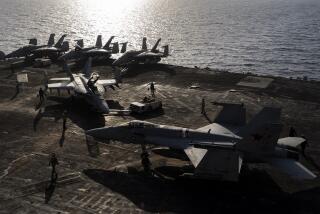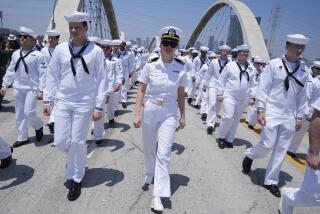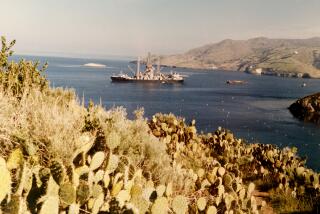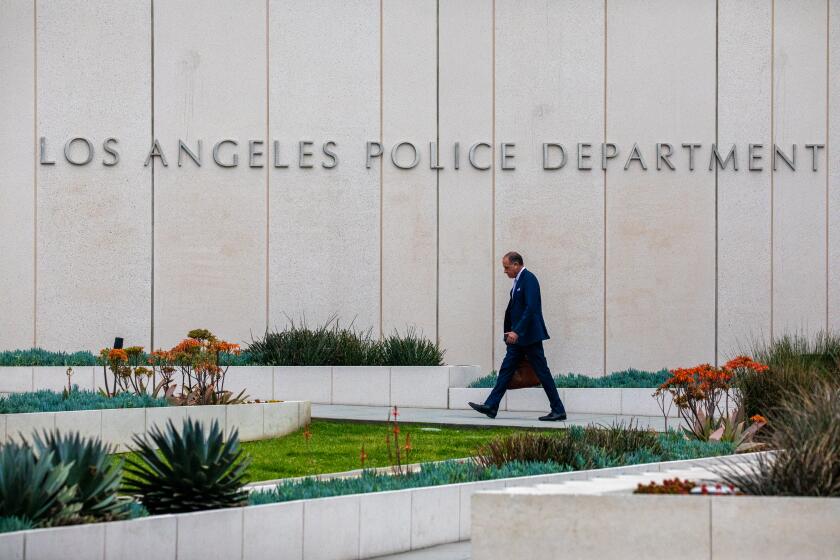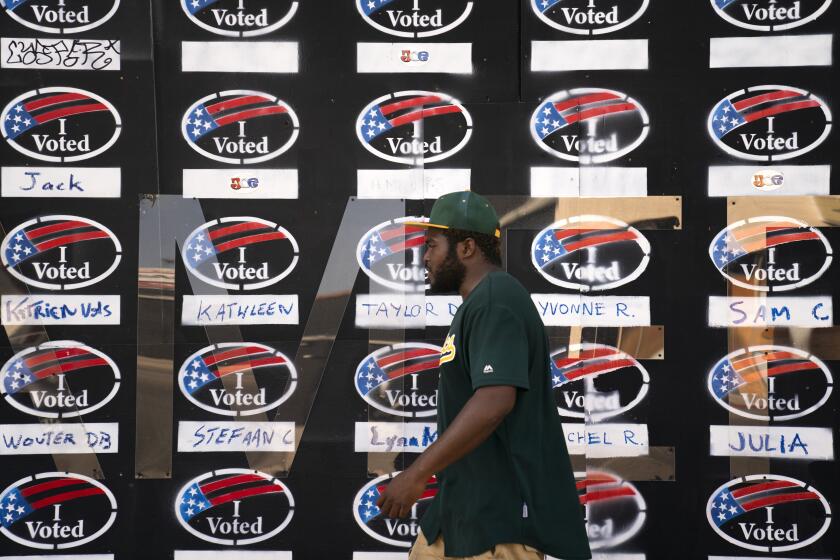Submarine Los Angeles is decommissioned from active fleet
The nuclear-powered attack submarine Los Angeles had been in the fleet for a dozen years, mostly patrolling the Pacific to keep a close watch on Russian subs, when Caleb Schrum was born.
On Saturday, Schrum, now 21 and a Navy petty officer second class, gently lowered the American flag on the aft of the Los Angeles at the conclusion of a tradition-rich ceremony in San Pedro in which the submarine was decommissioned from the active fleet.
The vessel that entered service in 1976 as the Navy’s most innovative underwater warship is headed for retirement as its oldest submarine. Soon the Los Angeles will head for the Puget Sound Naval Shipyard in Washington, where its nuclear reactor will be removed.
Under a clear sky at the Port of Los Angeles, several hundred former submariners and invited guests gathered to hear the Los Angeles described as “the first and the finest” and praised for a career that included 18 long-range deployments. The Los Angeles was the first of a new class of submarines, the Los Angeles class.
“I’m going to miss her,” said Chuck Wells, 54, who was the submarine’s first helmsman, guiding it to depths that, because of the need for secrecy, he can only say were “beyond 400 feet.”
John Christensen, 74, who served as the first captain of the Los Angeles, remembered the sub’s speed and agility. “We had an order: ‘Rig the ship for high speed,’ ” he said. “What that meant was ‘hang on.’ ”
True to the submariners’ nickname, “the silent service,” members were not allowed to talk about their Cold War adventures. “We did things you couldn’t tell the civilians about,” said Frank Lister, 72, the sub’s first top enlisted man.
Retired Rear Adm. John F. “Dugan” Shipway, the Los Angeles’ skipper from 1981 to 1985, said that within minutes of setting sail the first time, he ordered a 30-degree dive as a test. Quickly a report came that a fire had broken out and a forward area was filling with smoke.
Shipway, 67, said he immediately figured that he would be removed as captain for having ordered a reckless maneuver. Then came a follow-up report: The smoke was from chicken baking in the galley. “Dugan’s career was saved,” he said. “Forever after that, we had sliders [sandwiches] for lunch on the first day we set sail.”
The Los Angeles’ home port was Pearl Harbor, Hawaii. The vessel had been given its name after L.A. officials convinced the Navy of the city’s support for the Navy and particularly for the submarine service.
Councilwoman Janice Hahn, whose late father, longtime L.A. County Supervisor Kenneth Hahn, was at the submarine’s 1976 commissioning, said she hopes the Los Angeles, in retirement, can return to the port as an attraction.
As part of the ceremony, the Los Angeles relinquished a cribbage board used by Medal of Honor recipient Richard O’Kane during World War II. Legend holds that O’Kane did particularly well during a game and that the next day his submarine sank two freighters.
By tradition, his cribbage board stays with the oldest submarine in the Pacific fleet for good luck. A rite of passage calls for young officers to play a game with the sub’s captain.
Lt. Jack Shis, 26, who spent the last three years on the Los Angeles, remembers his first cribbage game. His next assignment is a shore billet in Naples, Italy, but he said he will miss the Los Angeles.
“This is a sad day for all of us,” he said. “It’s been a good experience, but all good things have to come to an end.”
More to Read
Sign up for Essential California
The most important California stories and recommendations in your inbox every morning.
You may occasionally receive promotional content from the Los Angeles Times.
